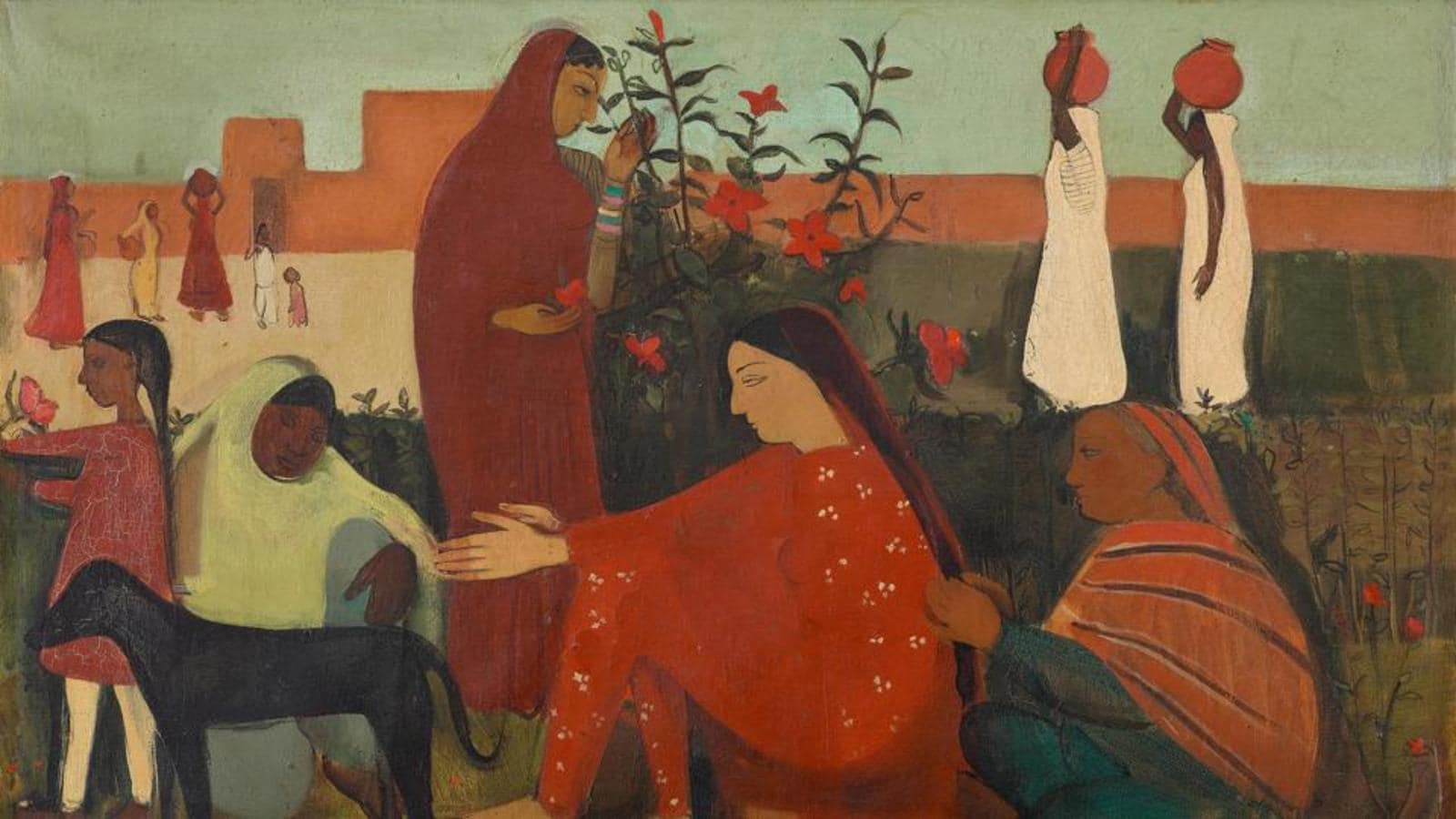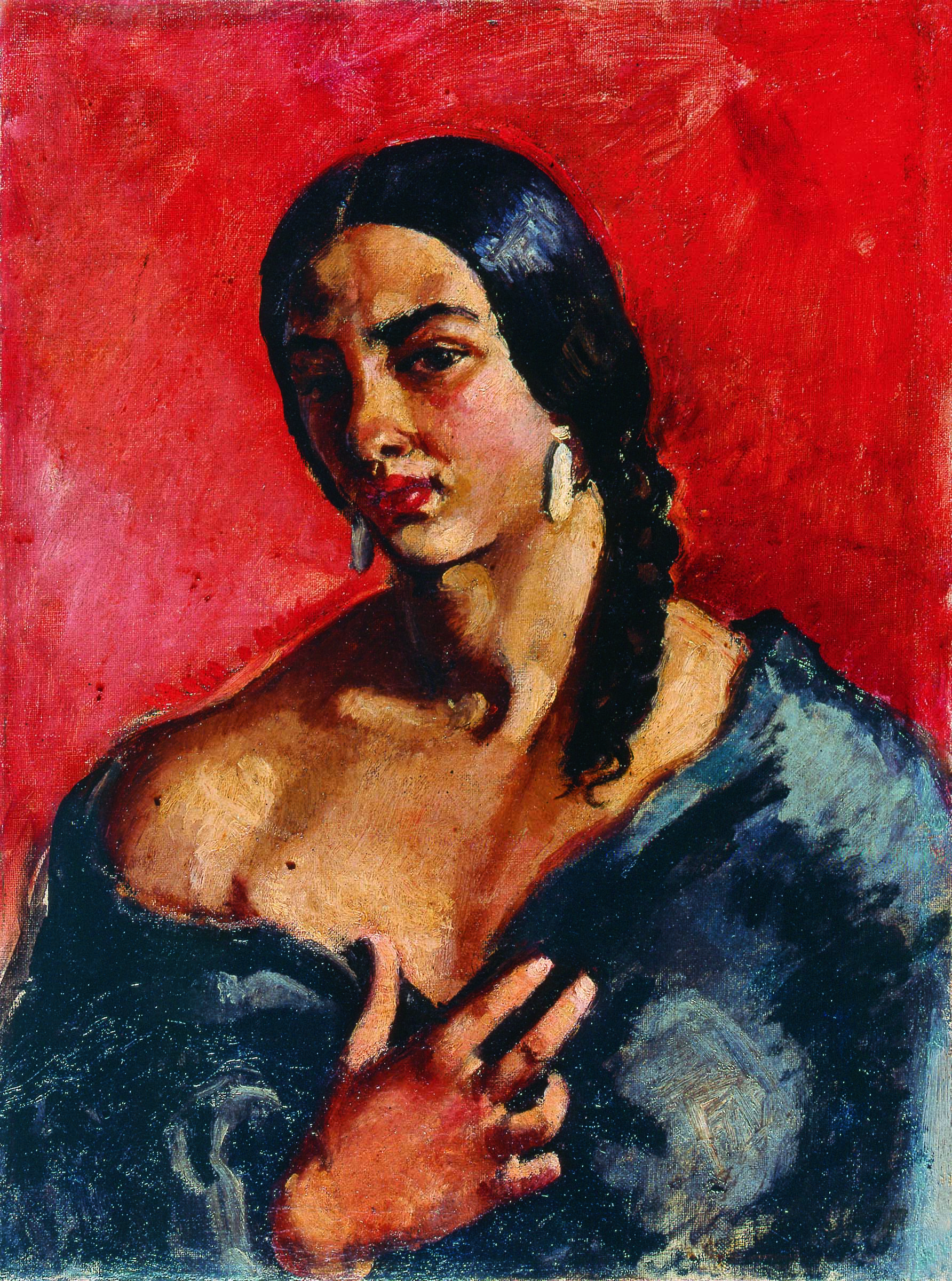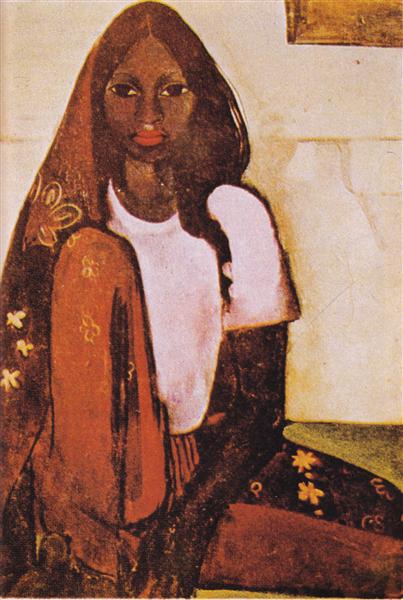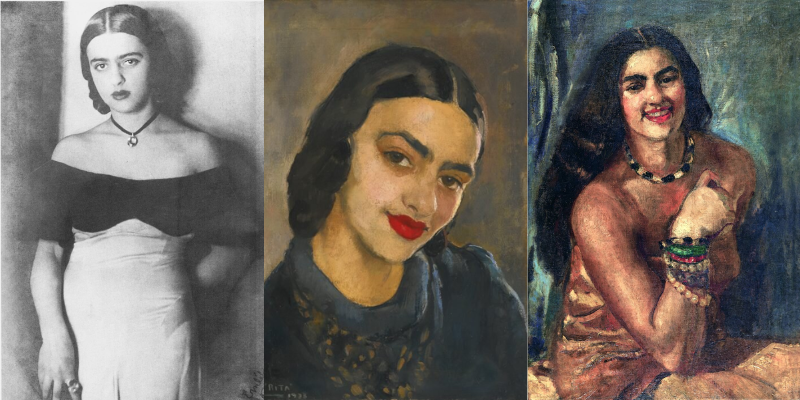Hiraeth – A homesickness for a home you cannot return to or that never was.
What is home? What was Amrita Sher-Gil’s longing? In her paintings, who or what was she grieving? Is it possible to create a ‘home’-a place and identity of our own despite all cultural and social responsibilities?
A painter, a rebel, spirited being, intolerant, kind, observant, sophisticated, and a legend, Amrita Sher-Gil is all this and maybe nothing but a strange genius in her pursuit of an all-consuming zeal for colours and a devotion to art.
Three-Folded Personality
An artist, a woman, an Indian and a Hungarian.
Amrita Sher-Gil was born on January 30, 1913, in Budapest, Hungary to Umrao Singh Sher-Gil, a Sikh aristocrat photographer and Marie Antoinette, a Jewish opera singer from Hungary. She spent her short-lived life in India, Hungary and other European cities. However small her time in Hungary was, it impacted her creative journey, as by the year 1919, she started drawing Hungarian fairytales and folk stories using coloured pencils.
In 1929, on the suggestion of her uncle Ervin Baktay, she joined the Ecole Nationale des Beaux-Arts academy in France and undertook academic art training. She quotes,
‘Before leaving for Europe, I had worked entirely from imagination and although I went through an academic phase in the first few years of my stay in Paris, I have never imitated nature servilely and now I am deviating more from naturalism towards new ‘significant forms.’ (Modern Indian Art: Imitating the Forms of the Past by Amrita Sher-Gil)

Amrita Sher-Gil was an art student in Paris from 1929-1934. These years weren’t exactly revolutionary on the European art scene. The title of grand masters was already claimed by Picasso, Braque and Matisse and their works had a definitive personal trait. Whereas Manet, Van Gogh and Gaugin had already deceased leaving the European art market eclectic, blended and academic.
However, the early 19th century saw India’s fight rise strongly against colonial rule. There were so many changes coming around, new definitions were being made and the scope of experimentation was thrilling. Abanindranath Tagore’s ‘Bharat Mata’ (1905), a woman dressed like a sadhvi, holding a book, paddy, a piece of white cloth and a rudraksha garland in her hands and similar images of classical Indian art dominated the art society.
In 1934, she explains in a letter to her father that her destiny as an artist awaits in India.
‘Europe belongs to Picasso, Matisse, Braque and many others. India belongs only to me’. She leaves the academy in the same year and moves back to India.
Her western training highlighted a deep sense of melancholy found in the pensive faces of her subjects much in contrast with her contemporaries in the nation. She found a unique place in the making of modern Indian art.
TISHOK – Embracing the light while it still burns, Looking at Amrita through her own words.
Vivan Sundaram has reproduced Amrita’s extant letters and writings from the originals in their entirety in form of two exhaustive lengthy volumes. While Amrita Sher-Gil existed as a part of the history of migration, mixed marriage, dual ancestry, confused sexuality and the contemporary webs of religion and faith, excerpts from the book truly capture her one true religion and identity – her work and her discipline towards painting.
April 1932
I work like a madman. No time to think!
July 1932
Forgive me that I have shown no signs of life for so long but if you had any idea how busy I had been you would forgive me, as you would not be able to put forth laziness as the cause.
August 1932
Of late, I have been working a great deal. I do nothing but paint the whole day. I finally got hold of the ‘gipsy girl’ who might be willing to pose for me. .
November 1932
I long to be at home. To work, to work. I feel the necessity to create, in short, I feel what is commonly called ‘Inspired’.
July 1933
I am in the studio from morning to evening (often I do not have lunch) in a state of total idiocrasy only rarely interrupted by moments of clarity.

1933
Here’s an opportunity to make a fortune with an original drawing by me, a mysterious little Indian princess on her way to become a great painter.
August 1934
The truth is that I am so busy the whole day with the water, boat, the forest, the fresh air and last but not least my brushes that I have little time or desire to go back in the room.
I am doing landscapes, I am working a lot, but the pictures are progressing slowly. I have stopped painting blindly more or less only depicting the objects in front of me. Sometimes I add something, sometimes I have some things out, that is, I make a composition – I create and speculate.
It is a shame that is only now I discovered it’s not enough to paint well.
An Evaluation of Paintings and Influences
Paris was the centre of the avant-garde art world in the early 19th century. Amrita Sher-Gil and her family moved to Paris in October 1929. From 1930 onwards she painted a series of self-portraits representing her many moods reflecting her fashion ethics, artistic and gender identities as well as her political environment.
In this painting, we see an exuberant, chirpy and vibrant portrait of Amrita Sher-Gil. She depicts herself in a rare ecstasy with her glamorous smile and flowing thick black hair. Her beaded bracelet and neckpiece add a hippie look to her overall appearance.

In 1929, at the age of 16, Amrita Sher-Gil started studying painting under the guidance of Lucien Simon at École des Beaux-Arts. The young man in the painting is a portrait of her fellow artist friend and lover Boris Tazlitsky. Taslitsky also painted a few of Sher-Gil’s portraits capturing her confidence and elegant demeanour. His memoirs from 1959 reveal Amrita as ‘his first passionate love’.
He sits with his sleeves rolled up, his face is framed by black hair, large red lips, and a serene, melancholy expression. In stark contrast to his delicate expressions, the background is done with expressive brushstrokes and dark tones of red and brown.

1.08.1925 India
The other day, we went to an Indian wedding where the bride was 13 years old and the groom was over 50 and had three wives already. The poor bride looked so lost and devastated amidst all the noise of her wedding.
From an early age, Amrita paid attention to the social practices in Indian society and wrote about them in her diary. So, it is only understood that when she moved to India to pursue her calling as a painter, these observations and notes took the form of a painting.
This oil on canvas painting depicts a girl, presumably the bride staring back at the viewers in a state of melancholy. Her never-blinking eyes capture the emotionlessness on her face and a passive sense of helplessness. She sits and awaits as her destiny is unfolded by her family and husband, never once getting a chance to see what all life could be.

November 1936 marks an important pin in Amrita’s journey. She visited the Ajanta and Ellora caves in Aurangabad with her friend Barada Ukil. The wall murals at Ajanta left a lasting impression on her as she was taken aback by what was universally considered masterpieces of Indian art.
This painting is a part of the South Indian trilogy by her which included the Brahmacharis and South Indian Villagers Going to Market.
Bride’s toilet peeks into a bride’s chamber where a young, light-skinned woman presumably, the bride is seated half-naked with her palms covered in mehndi. She is surrounded by two women and two children. One of the ladies is seen dressing her hair while the other one holds a container. Much like Amrita’s recurring subjects, this painting also glimpses rural Indian life from a simple and unique perspective.

Amrita Sher-Gil started her married life with Dr. Victor Egan in the year 1939. Dr. Victor established his medical clinic, and Amrita also set up her studio in their home and started painting again.
This painting titled ‘Resting’ illustrates the leisurely pace of rural life in India as she observed, especially for women. Each woman is painted in a single colour to give a sense of uniformity. By focusing on the female form and its expressions instead of the body, this technique draws attention to issues of sorrow and monotony in women’s lives.
On December 5, 1941, Amrita Sher-Gil, aged 28, took her last breath before finishing her last painting. By the year 1976, paintings by Amrita were declared a national treasure by the government of India. However strong her desire was to capture the spirit of India, in her painting we see a poor India stuck in melancholy and traditional norms. It’s quite endearing when Bulk Raj Anand, an Indian writer observes, ‘She had seen the Indian people from the viewpoint of an outsider wanting to be an insider.’
References
- K.G. Subramanyan, Amrita Sher-Gil and the East-West Dilemma, Amrit Sher-Gil: Art & Life, Oxford University Press, 2014
- Katalin Keseru, Amrita Sher-Gil: The Indian Painter and Her French and Hungarian Connections, Amrit Sher-Gil: Art & Life, Oxford University Press, 2014
- Amrita Shergil.com
- Vivan Sundaram, Amrita Sher-Gil: a self-portrait in letters and writings Volume 1 & Volume 2, Tulika Books, 2010
- Britannica- Amrita Shergil
Read Also:

Pallavi Baheti is a creative practitioner from the field of art and curation.






